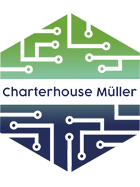
18 May A Beginners Guide To Data Sanitisation
When it comes to protecting the data within your business, there are a lots of different things you need to think about. GDPR has helpful outlines of all of the requirements around collecting data and storing it, as well as giving more information on why businesses need to dispose of data correctly. This, while seemingly a small area, is actually one of the most important parts of the process – and the one many businesses were lagging behind on previously. When data has reached the end of its useful lifespan, many businesses didn’t know how to dispose of it in an effective and secure way, especially if that data was held in a digital format. The answer? Data sanitisation. And since that’s a new term to many, we wanted to give you a rundown of what it is, what it means, and when you might need professional help.
What Is Data Sanitisation?
First things, first, let’s start with the basics. Data sanitisation is defined as:
‘The process of deliberately, permanently and irreversibly removing or destroying the data stored on a memory device (including HHD, SSD, CD/DVD, USB, mobile device, computer or accessory) which is used to make data unrecoverable to avoid privacy leaks.’
In other words, it is the process of completely destroying the data, no matter what the format, beyond recognition, and to the point where it could not be recovered or put back together. If this data is in paper format, that would mean shredding it to at least cross, if not micro level (or burning it, if you want to be less eco-friendly). But it’s a bit more difficult for digital data, especially if you don’t have the software and equipment to do it properly. And sadly, it’s a bit more complicated than popping to the shops and buying a shredder!
What Are The Options?
In very, very general terms, there are 3 main ways you can sanitise your computers and other technology:
Physical Destruction: What it says on the tin – the destruction of the physical device holding the data. This approach will make the stored data completely irretrievable, but it will also render the storage medium useless. This is not an issue if it’s an old machine that can be of no further use, even refurbished, but it should very much be treated as the true ‘end of life’ option. Physical destruction methods include disintegration, pulverisation, melting and incineration, but the safest and most common is shredding.
Degaussing: Degaussing is the process of exposing the magnetic media to the strong magnetic field of a degausser to disrupt the magnetic domain holding the data. It’s a very effective method, and is often used at a governmental level, since it makes data unrecoverable even in lab equipment. However, as technology has evolved into lighter density storage with less reliance on magnetic fields (and the fact that it can damage the equipment as well as the data), degaussing has very much fallen out of favour, and it would be very difficult for you to find a degaussing solution nowadays.
Data Erasure: This is the more modern solution, and is far more common. Data erasure is the process of clearing all data from the medium using software or hardware products. These products work by overwriting all the storage space on the media with new, non-sensitive data (like a lot of 1’s and 0’s). This new data will cover all addressable locations on the medium, ensuring there is no trace of the original data left. This approach is the most effective method of data sanitisation there is, but it does require specialist software and equipment to carry out.
Why Use A Professional?
As we move further into the digital world, data sanitisation will become more and more important. Technology will continue to evolve, and businesses will need to evolve with it in order to survive. This means a huge increase in the turnover of machines and data-holding technologies. So, businesses will need a way of managing all of that data sanitisation effectively. While some may take this in house, it can be expensive, especially if multiple programmes are needed to truly sanitise your data, or if equipment needs to be refurbished before it can be sold to recoup some of the costs. This is where a professional service comes in.
Experts like us have the capacity equipment and programmes needed to well and truly sanitise any machine you bring to us in a quick and cost-effective manner. And because we handle this kind of thing in bulk every day, we can pass on the cost savings to you. This means you can be sure your equipment is being properly sanitised, and your data is completely safe. Something you may not be able to guarantee if you took on the task by yourself.
If you’re still confused about data sanitisation methods, or want to know more about how Charterhouse Muller can help protect your business with data sanitisation, just get in touch with the team today and book your free consultation.

